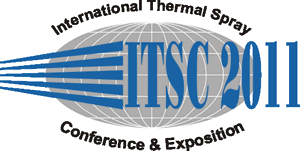
|
2577 |
|
Novel manufacturing method for producing stacked wire mesh compact heat exchangers using cold spray |
|
Jamil Assaad* / University of Ottawa, Canada Antoine Corbeil / Brayton Energy Canada, Canada Patrick Richer/ Brayton Energy Canada, Canada Bertrand Jodoin/ University of Ottawa, Canada Bertrand Jodoin/ University of Ottawa, Canada |
|
Heat exchangers play a vital role in ongoing efforts to conserve energy in many thermodynamic systems. Plate-type heat exchangers typically consist of two flat separated flow paths in which heat transfer enhancing matrices (fins, wire mesh or other extended surfaces) are inserted. As fluid flows through openings in the internal matrix, the combined effects of small and irregular hydraulic diameters as well as elevated heat transfer surface areas results in highly-efficient heat transfer to the external fluid. This in turn allows for very versatile and compact heat exchanger designs. Unfortunately, typical plate-type heat exchanger fabrication methods such as brazing are labour intensive and limit post-processing operations such as welding. In the present paper, a novel micro-heat exchanger fabrication method using recently patented technologies is presented. The approach uses thermal spray processes such as Pulsed Gas Dynamic Spraying (PGDS) as an alternative to brazing for the production of a pressure barrier and integration of flow headers. This technique offers significant advantages such as the possibility of more compact heat exchanger configurations with vast material selections and a simplified manufacturing operation. Mesh wafer surfaces sealed using PGDS exhibit a more intimate contact surface between the mesh wire tips and sealed surface, thereby promoting conduction through the outer walls and improving the heat exchanger efficiency. Samples were produced and investigated in order to demonstrate the feasibility of this method. Testing carried out on the samples involved qualitative analysis by means of optical microscopy as well as quantitative assessment of pressure bearing capability by means of leak, burst and tensile testing. |